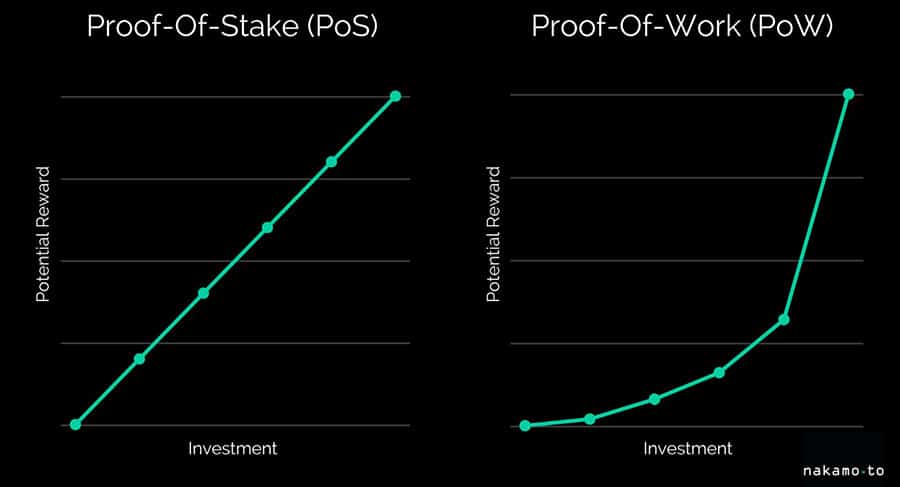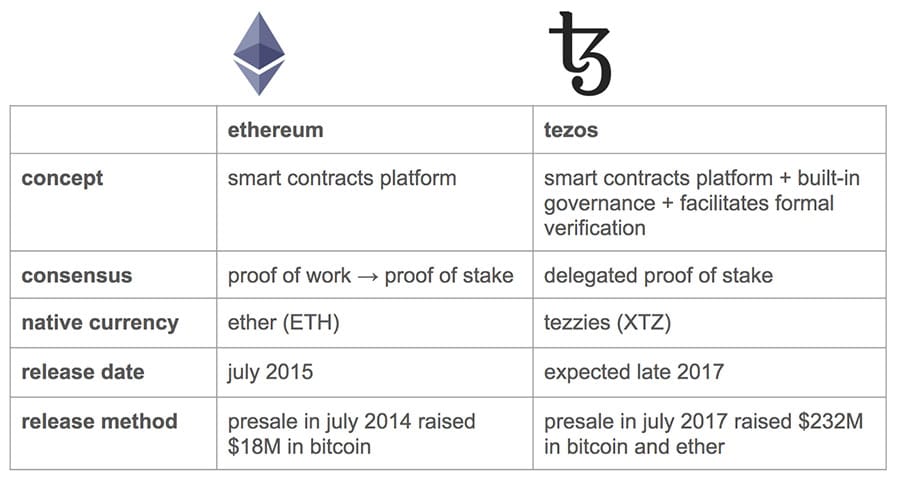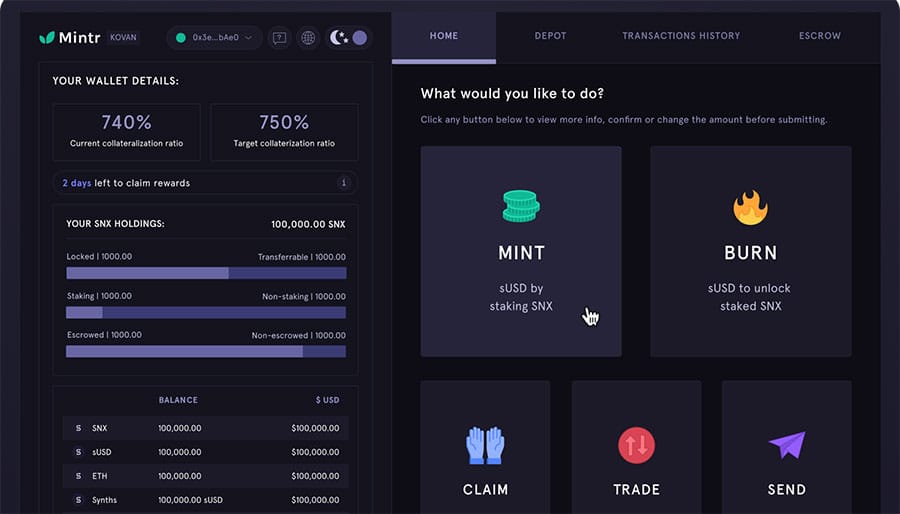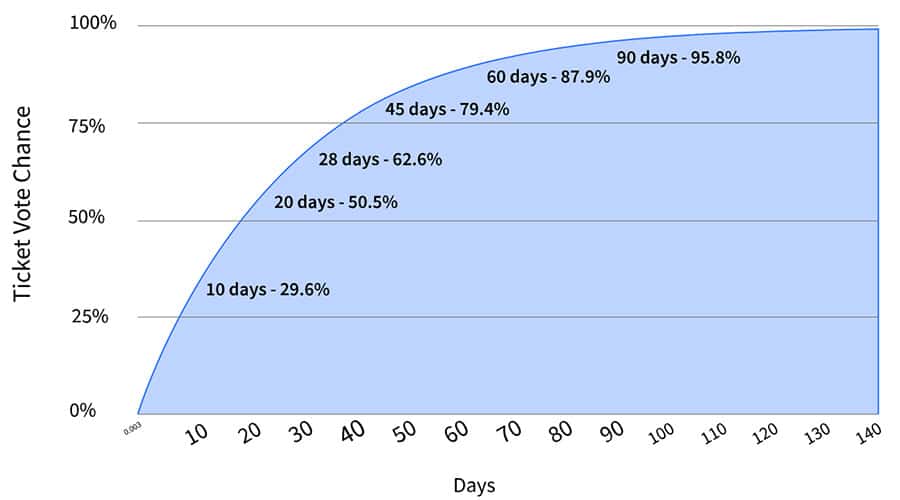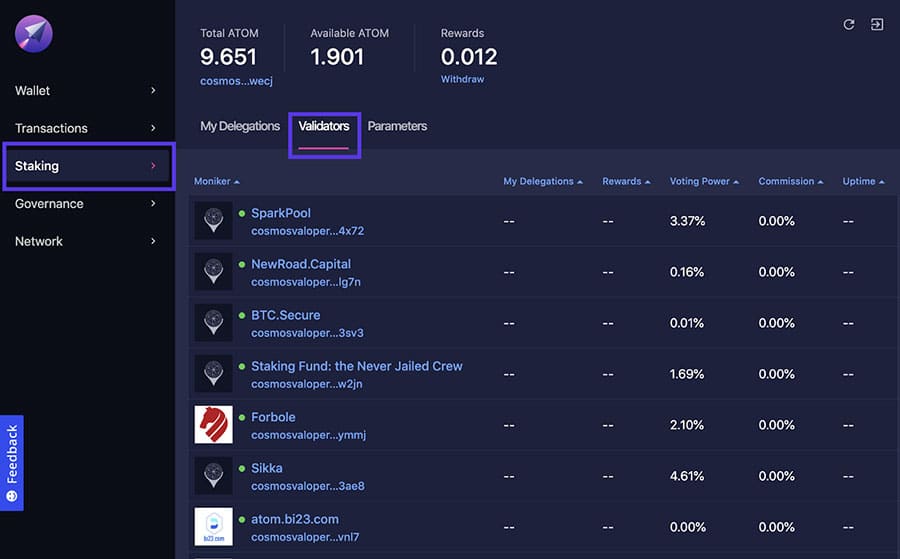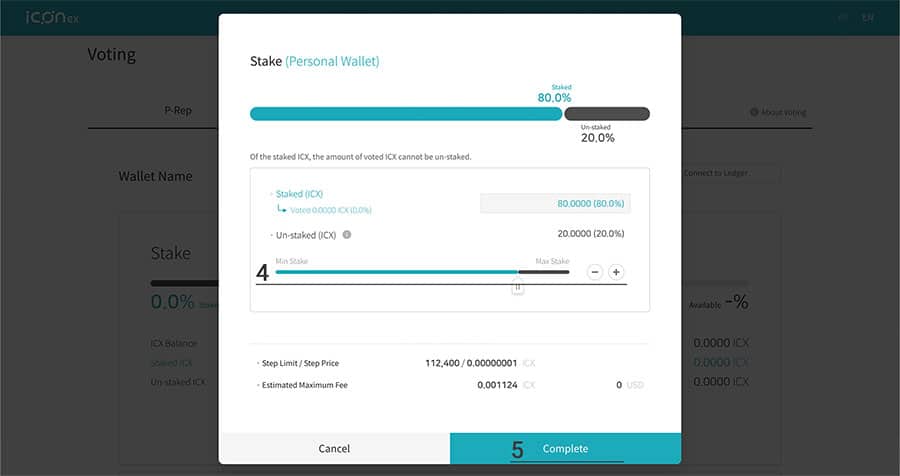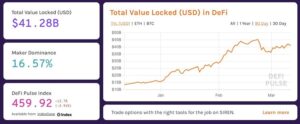Most people try to make money through crypto by finding some coin that rallies by 100x. However, there is a much more stable way of making gains: Staking.
Proof-of-Stake is seen as one of the best alternatives to Proof-of-Work. And there are now a number of projects that use this consensus algorithm and give their users the opportunity to earn some juicy staking returns.
So, where are the best coins to stake?
In this post, I will take a look at the top 7 best staking coins. I will also give you an in-depth overview to proof of stake as well as taking you through some top tips that you need to know when staking.
Proof of Stake at Work
When Bitcoin was created in 2009 the consensus algorithm chosen to secure the network was a Proof of Work algorithm.
Just two years later in 2011 the Proof of Stake consensus algorithm was introduced on the Bitcointalk forum as a way to avoid the problems associated with the Proof of Work algorithm, most importantly the heavy usage of resources needed to perform mining and to reach consensus. Proof of Stake took a significantly different path to reaching consensus.
Unlike the Proof of Work algorithm, which uses computational resources to solve cryptographic problems to secure the network and validate blocks, the Proof of Stake algorithm uses an election process that selects the node that will validate each block.
This election process can use a number of factors including randomization, the number of coins being held in the staking wallet, the staking age of coins, or other factors.
Proof of Work and Proof of Stake systems differ in how their cryptocurrencies are created and how individuals are rewarded. In the case of Proof of Work blockchains the miners are rewarded with newly created cryptocurrency as part of the mining process. In the case of Proof of Stake blockchains the stakers are typically rewarded using transaction fees.
One other difference that is immediately noticed with Proof of Stake systems is that their blocks are “forged” rather than being “mined” like in Proof of Work systems. Many of the Proof of Stake systems begin as Proof of Work systems and later switch, while others will get their start by selling a stash of pre-mined coins.
How Staking Works
Those users interested in participating in the forging process on a Proof of Stake blockchain can do so by locking a number of coins as their stake. The size of the stake is used to determine if an individual node will be selected to validate and forge the next block. Those with a larger stake have a greater chance of becoming the next to validate a block and receive a reward.
Any time a node is selected to forge a block it begins by checking each transaction in the block to determine if they are all valid. If they are the node will forge the block and add it to the blockchain. In return the node receives the transaction fees associated with that block as a reward.
Several unique variations on the basic Proof of Stake algorithm have been added to this process in order to avoid the wealthiest nodes being favored consistently in the selection process. Two of these methods are Coin Age Selection and Randomized Block Selection.
Coin Age Selection
This method chooses validating nodes based on how long the coins held there have been staked. The number of coins being staked are multiplied by the length of time those coins have been held to determine coin age.
After forging a block the coin age is reset to zero which has the effect of making certain a period of time must pass before those coins can be used again to forge a block. This method prevents nodes with large stakes from controlling the blockchain.
Randomized Block Selection
In this method the selection isn’t really as random as you might think based on the name. The validating node is selected by searching for nodes that have the combination of the largest stake and the lowest hash value. Because blockchains make the holdings of each address, and thus the size of stakes, public it is usually possible to forecast the next forger based on available information.
There are many different cryptocurrencies using the Proof of Stake method, and each one has its own combination of methods and rules used to validate and forge new blocks. Each combination was selected as what the developers feel is best for the blockchain and for its users.
Why Use Staking?
The stake in the Proof of Stake system is a financial incentive for the operation of nodes, and to ensure that nodes will not validate fraudulent transactions.
This works because any time the network detects a fraudulent transaction the node that forged the transaction loses some part of its stake, and is blocked from forging blocks in the future. This means as long as the stake remains higher than the forging reward the validating node stands to lose more by forging fraudulent transactions.
This is also a secure system because to control the network and freely approve fraudulent transactions a node would have to own a stake equal to 51% or more of all staked coins. In nearly every case this is impractical if not impossible given the large value of most blockchains. Imagine trying to control 51% of the circulating supply of a cryptocurrency with a market capitalization of $1 billion.
As you can see by this point, the major advantages of using the Proof of Stake algorithm are energy or resource efficiency and blockchain security.
Where Proof of Work systems have seen mining become increasingly centralized due to the expenses involved with running a mining rig, the Proof of Stake systems are increasingly decentralized because it is both cheap and easy for users to run their own nodes.
This encourages an ever greater number of users to set up their own nodes. Additionally, the small forging reward and decreased need for releasing large amounts of coins as a reward often helps to stabilize the price of any particular Proof of Stake cryptocurrency.
Passive Income through Cryptocurrency
Many users are moving capital into staking cryptocurrencies as a way to generate passive income. The rewards from staking coins can be considered as similar to the interest paid on bonds or CD’s or like the dividends paid out on stocks.
In the case of staking the coins are locked in a wallet and over time more coins are added to that wallet as a reward. The more coins that are being held, the greater the staking rewards. That’s just like getting bond interest payments or dividend payouts.
There are a number of different coins that can be used for staking. For example, the website StakingRewards.com has 90 different yield-bearing digital assets listed. Some of the most popular cryptocurrencies are Proof of Stake coins. This includes the tenth largest cryptocurrency by market cap – Tezos.
It also includes well known coins like Stellar Lumens and Dash. And in the near future both Cardano and Ethereum are expected to switch to Proof of Stake systems, which will increase interest in staking dramatically.
In several cases it is even possible to hold your coins in an exchange wallet and continue staking. Tezos allows users to hold XTZ in a Binance or Coinbase wallet and still stake those coins. The downside is that the exchange keeps a percentage of the rewards generated through staking.
Clearly staking can be one way to increase cryptocurrency holdings with little effort and expense. The danger is that some projects have done things that inflate the projected return from staking, which means it isn’t as profitable to stake certain coins as the project would have you believe. Users need to take a close look at the economic models being used with a staking coin to ensure it is effective and sustainable.
Top 7 Staking Coins
That’s enough of the background – time to move onto my picks for the top 7 best staking coins.
For my criteria, I have chosen coins that not only have a decent staking return but those that also have a significant chance of increasing in price. There is no point staking a coin that loses half its value in a year!
Hopefully it will help you to decide where to best hold your crypto assets and earn staking rewards.
1. Tezos (XTZ)
Tezos (XTZ) is one of the more recent blockchain projects and cryptocurrencies, having been released on June 30, 2018. It was developed by Authur Breitman, a former analyst at Morgan Stanley. It is multi-purpose and supports both Turing complete smart contracts and dApps. The protocol that runs Tezos was made to be self-correcting and the platform looks to use an on-chain governance model to manage changes to the network.
Unlike many other blockchain projects, Tezos was not based on the codebase of any other blockchain. It was created using the OCaml programming language and is unique, It also implements a unique delegated Proof of Stake consensus called Liquid Proof of Stake (LPoS).
The Tezos blockchain is powered by the cryptocurrency XTZ, which is created through a process known as ‘baking’. This is simply a different name for staking and the bakers are rewarded for staking their XTZ to help validate new blocks. Bakers that allow fraudulent transactions to be validated lose the XTZ they have staked.
In order to ‘bake’ Tezos it is required to have a ‘full roll’ of XTZ, which is 8,000 XTZ. Users also need to run their own full node. Because that isn’t feasible for many users a large number of third-party bakers have grown, allowing users to delegate their XTZ and receive rewards. In return, the third-party baker takes anywhere from 0% to 25% of the staking rewards. Depending on which baker is used current returns are from 5% to 6% annually.
Tezos has rapidly become one of the favored staking cryptocurrencies because of its good annual yield, the ease of delegating to gain rewards even with a small stake, and the fact that Tezos has moved into the #10 spot in terms of total market capitalization.
2. Synthetix (SNX)
Synthetix (SNX) is an Ethereum based project built for the creation of synthetic assets linked to the value of some other asset. These synthetic assets can be based on physical commodities, fiat currencies, stocks, bonds, other cryptocurrencies, or basically anything with value. Each synthetic asset created is an ERC-20 construct and is backed by the Synthetix Network Token (SNX).
The project also runs the Synthetix Exchange, where all of the synthetic assets, or ‘Synths’ can be easily traded in a peer-to-peer fashion and with infinite liquidity, so traders have no worries over slippage or an order book.
Minting new Synths is a straight-forward process, and is accomplished by locking SNX tokens in a smart contract as collateral. A 750% collateralization ratio has been set to allow for fluctuations in the value of SNX and Synths. Any time the collateralization ratio falls below 750% the user is unable to collect fees generated by Synth transactions, thus incentivizing users to maintain a minimum 750% collateralization ratio.
Staking rewards were added to the Synthetix network in March 2019 as a way to fulfill the need for people to contribute to the system. That is, SNX holders can mint new Synths and are then paid out a staking reward on a weekly basis.
The rewards come from transaction fees and must be claimed by users through the Mintr dApp, which is also used to mint Synths. Staking rewards can be claimed for up to two weeks in arrears, but if not claimed by then the reward is returned to the reward pool. As of April 2020 the annual return for staking SNX is 55.28% according to StakingRewards.com.
With the huge annual reward this is obviously a good way to generate passive income. The project has also been growing well, as the synthetic assets are a good way to get exposure to traditional markets.
3. Algorand (ALGO)
Algorand (ALGO) was created as a decentralized, permissionless blockchain with the goal of enabling a borderless economy. It aims to solve the major blockchain problem of scalability while maintaining decentralization and security. Algorand does all this and also gives users extremely low transaction fees, which is crucial if the project expects to create a borderless economy.
Algorand uses a unique consensus algorithm known as Pure Proof of Stake (PPoS). It allows the system to reach consensus without a central authority, and can tolerate malicious actors in the system so long as the majority of the stake is not malicious. Unlike some other Proof of Stake systems, PPoS has no mechanism for delegation, which avoids the problem of a single user or small set of users gathering a majority of voting power.
The Algorand network also allows for the construction of decentralized applications, and with a reported throughput of 1,000 transactions per second it is a good alternative for dApp developers looking for a faster, low cost network.
Anyone holding 1 ALGO or more in any non-custodial wallet is able to earn staking rewards with each block created. The staking rewrds were initially set at a 10% annual rate, but as of April 2020 the annual reward is 5.46% according to StakingRewards.com or about 8% on Binance Staking.
We like Algorand for staking because it is made quite simple. No nodes need to be run, and there are no other special requirements. Users only need to hold their ALGO in a supported non-custodial wallet, and payments are made roughly every 20 minutes.
4. Loom Network (LOOM)
The Loom Network was created as a Platform as a Service (PaaS) blockchain that allows for Solidity based dApps to run on side chains. The reasoning behind the creation of this system is that each application should be able to use an appropriate consensus model based on individual needs and potential threats. The Loom Network uses Delegated Proof of Stake to enable scaling of dApps while keeping them on the Ethereum blockchain for its security.
While the Loom Network was launched in early 2018, it wasn’t until February 2019 that staking came to the network. Staking was added as a way to incentivize users to secure the Loom Basechain. The Basechain is a high performance side-chain that acts as a bridge between a number of different chains, including Ethereum, Bitcoin, Tron, Binance Chain, EOS, and Cosmos.
The token used in the Loom Network is LOOM, a Proof of Stake token used to secure the Loom Network mainnet. The token is used by developers to pay for dApp hosting and can also be staked by users to receive rewards.
Staking LOOM isn’t the easiest of the staking tokens we’ve looked at so far. First of all, LOOM must be held in a supported wallet. As of April 2020 only Metamask, Ledger, and Trezor are supported. In addition to depositing LOOM users must also deposit a small amount of ETH to cover gas costs on the Ethereum network.
Once that’s done users must go to the LOOM Basechain Wallet and connect it to the wallet holding their LOOM tokens. Then the LOOM tokens can be transferred to the Basechain Wallet. After that is complete the user must delegate their LOOM tokens to a validator. The validators do keep a portion (as much as 25% in some cases) of the staking rewards. Rewards will accumulate in the Basechain Wallet and users must manually collect those rewards from time to time.
The good news for all these steps is the annual return on LOOM staking is 17% as of April 2020. That helps make LOOM staking a top pick. Additionally it is a well established platform, and has been making great progress in the gaming dApp industry.
5. Decred (DCR)
Decred was launched in 2016 as a Bitcoin fork focused on on-chain governance and consensus mechanisms. The project was created with a hybrid Proof of Work (PoW) / Proof of Stake (PoS) consensus voting mechanism that allowed Decred to successfully carry off a user activated consensus vote. Other features of the project include cross chain atomic swaps, smart contracts, cross platform wallets, and a public proposal platform.
In the hybrid PoW/PoS midel used by Decred miners still operate on the network, processing and validating transactions and building new blocks, for which they receive 60% of the block rewards. In addition, Decred holders can use their DCR to obtain voting tickets which can be used to approve the block generation of the miners and to vote on any open network proposals.
While Decred has arguably solved the problem of on-chain governance, it still suffers from the scalability issues of its parent Bitcoin. It also lags behind other potential payment cryptocurrencies, although some feel that the decentralized governance will help it survive. Larger competitors include Bitcoin, Cardano, and Dash.
There are two ways to stake DCR – as a Solo Voter or with a Voting Service Provider. Solo Voters must use the Decred command line interface and need to maintain a wallet connected to the Decred network with 100% uptime to receive staking rewards. Voting Service Providers offer a staking service through DCR delegation and charge 0.4% to 5% of the staking reward for their service. As of April 2020 the annual yield for staking DCR tokens is 7.93%.
We like Decred as a long-term stable project with a good staking reward. It has a large user base, and its on-chain governance is one of the best decentralized solutions created so far.
6. Cosmos (ATOM)
Cosmos (ATOM) calls itself the most customizable, scalable, powerful and interoperable ecosystem of connected blockchains. It’s a decentralized network of independent blockchains powered by Tendermint and other Byzantine Fault Tolerant algorithms.
It is Byzantine Fault Tolerance that allows a blockchain to achieve consensus even in an environment that potentially contains malicious nodes. Cosmos is striving to become the “Internet of Blockchains” by linking all the myriad of blockchains into a single network where tokens can be seamlessly transferred throughout the network.
Cosmos uses a Delegated Proof of Stake (DPoS) system in which there are delegators (aka stakers) and validators. The delegators decide which validators will participate in consensus and the validators work to validate transactions and add new blocks to the blockchain. Both groups can collect staking rewards which are currently paid in ATOM tokens, but theoretically the token of any blockchain that’s been added to the network could be used.
Users are able to stake any amount of ATOMs by delegating to a validator. The validators keep a portion of the staking reward that can vary from 0% up to 25%. Staking rewards as of April 2020 are 8.2% annually, but can go as high as 20% if the proportion of ATOM being staked falls below two-thirds of the total supply. Staking is as easy as holding ATOM in a supported wallet and then choosing a validator to delegate to. It is also necessary to periodically claim rewards manually.
Cosmos remains a very popular project and ATOM is currently ranked the 25th largest cryptocurrency by market capitalization. The staking reward for the token is excellent, and if the team can successfully implement its vision for an “Internet of Blockchains” it could begin paying staking rewards in a number of different cryptocurrencies, which would put it ahead of other projects.
7. Icon (ICX)
Icon was created as a decentralized blockchain that will allow interoperability to provide the ability for connections and transactions between any blockchain. It uses a proprietary “Blockchain Transmission Protocol” to create cross-chain interoperability that would be impossible without Icon. Initially the project was formed to ensure institutions could share data with transparency and integrity, and to move assets without the need for a centralized organization.
The Icon Network is powered by the ICX cryptocurrency, allowing for smart contract usage and the interoperability of diverse blockchains. It uses a Byzantine Fault Tolerant Delegated Proof of Stake (BFT-DPoS) consensus method and an economic governance protocol called Delegated Proof of Contribution (DPoC). The entire network is powered by the proprietary ‘Loopchain’ blockchain engine and is scalable to hundreds of transactions per second.
The Icon staking reward model will reward stakers with anywhere from 6% to 36% annually, depending on the total amount of ICX being staked in the network. As of April 2020 the annual return is just above 16%. Any number of ICX can be staked, but it does have to be held in the Icon wallet, which is available as a mobile version for iOS and Android, or as a Chrome extension. In addition to staking holders must vote for P-Reps, which is Icon’s version of validators.
Icon is an established blockchain, with a solid core of users. The ICX token is the 42nd largest cryptocurrency by market cap, and the current 16% yield for staking is excellent. Price has been low, but looks to be recovering.
Conclusion
As you can see there are a number of coins that are available for staking, and we’ve only touched on the best (in our view). There are many other staking coins to explore and this is by no means a comprehensive list. Remember, if choosing a coin it should be based on more than just the staking return.
Some users may find it quite complicated to stake solo with the command line wallets and core wallets for some of the picks. Exchanges such as Binance offer their own staking services where they will be the delegator that you can stake your coins on. All you really need to do is hold the coins in your Binance wallet and assign them to the staking pool.
Of course, these services are not free and the exchanges charge a fee that could eat into your staking returns. It also means that the project becomes centralized as staking pools are increasingly controlled by large exchanges. You will have to decide whether the trade off is indeed worth it.
Either way, adding some of these to your portfolio can help to even out any volatility in coin prices, and also provides a way to create a passive income stream while also being more stable than trading activity.
Featured Image via Shutterstock
Disclaimer: These are the writer’s opinions and should not be considered investment advice. Readers should do their own research.
Source: https://www.coinbureau.com/analysis/best-staking-crypto/
- &
- 000
- 2016
- 2019
- 2020
- 7
- advice
- ALGO
- Algorand
- algorithm
- algorithms
- All
- Allowing
- analyst
- android
- Annually
- Application
- applications
- April
- asset
- Assets
- atom
- Atomic swaps
- BEST
- Billion
- binance
- binance chain
- Bitcoin
- blockchain
- blockchain projects
- Blockchain security
- Bonds
- BRIDGE
- Building
- capital
- Cardano
- cases
- charge
- checking
- Chrome
- Coin
- coinbase
- Coins
- Commodities
- competitors
- Connections
- Consensus
- construction
- continue
- contract
- contracts
- Cosmos
- Costs
- crypto
- cryptocurrencies
- cryptocurrency
- currencies
- Current
- dapp
- DApps
- Dash
- data
- day
- Decentralization
- decentralized
- Decentralized Applications
- decentralized network
- Decred
- developers
- digital
- Digital Assets
- dividends
- Early
- eat
- Economic
- economy
- ecosystem
- Effective
- efficiency
- Election
- energy
- Environment
- EOS
- ERC-20
- ETH
- ethereum
- ethereum network
- exchange
- Exchanges
- expects
- expenses
- Fashion
- Features
- Fees
- Fiat
- financial
- First
- fork
- Free
- Fulfill
- full
- Full node
- future
- gaming
- GAS
- good
- governance
- great
- Growing
- hash
- High
- hold
- How
- HTTPS
- huge
- Hundreds
- Hybrid
- ICON
- ICX
- image
- Including
- Income
- Increase
- industry
- information
- institutions
- interest
- Interoperability
- investment
- involved
- iOS
- issues
- IT
- keeping
- language
- large
- Ledger
- Line
- Liquid
- Liquidity
- List
- Long
- looked
- Lumens
- major
- Majority
- Making
- March
- Market
- Market Cap
- Market Capitalization
- Markets
- MetaMask
- Miners
- Mining
- Mobile
- model
- money
- morgan stanley
- Most Popular
- move
- Near
- network
- news
- nodes
- offer
- open
- Opinions
- Opportunity
- order
- Other
- Pay
- payment
- payments
- People
- performance
- platform
- pool
- Pools
- Popular
- portfolio
- PoS
- PoW
- power
- price
- Programming
- project
- projects
- proof
- Proof-of-Stake
- Proof-of-Work
- proposal
- public
- Randomized
- readers
- Requirements
- research
- resource
- Resources
- returns
- Rewards
- rig
- rules
- Run
- running
- Scalability
- scaling
- security
- selected
- Services
- set
- Share
- Simple
- Size
- small
- smart
- smart contract
- Smart Contracts
- So
- solidity
- Solutions
- SOLVE
- Spot
- stake
- Staking
- stanley
- start
- Stash
- Stellar
- Stellar Lumens
- Stocks
- supply
- Supported
- Supports
- sustainable
- Switch
- system
- Systems
- Tezos
- threats
- time
- tips
- token
- Tokens
- tolerance
- top
- trade
- Traders
- Trading
- transaction
- Transactions
- Transparency
- Trezor
- TRON
- turing
- ui
- users
- value
- View
- vision
- Volatility
- Vote
- Voting
- Wallet
- Wallets
- Website
- weekly
- Work
- works
- worth
- XTZ
- years
- Yield
- zero



